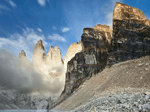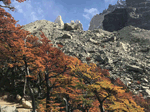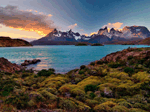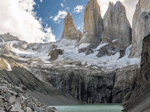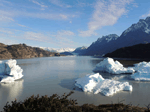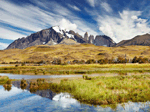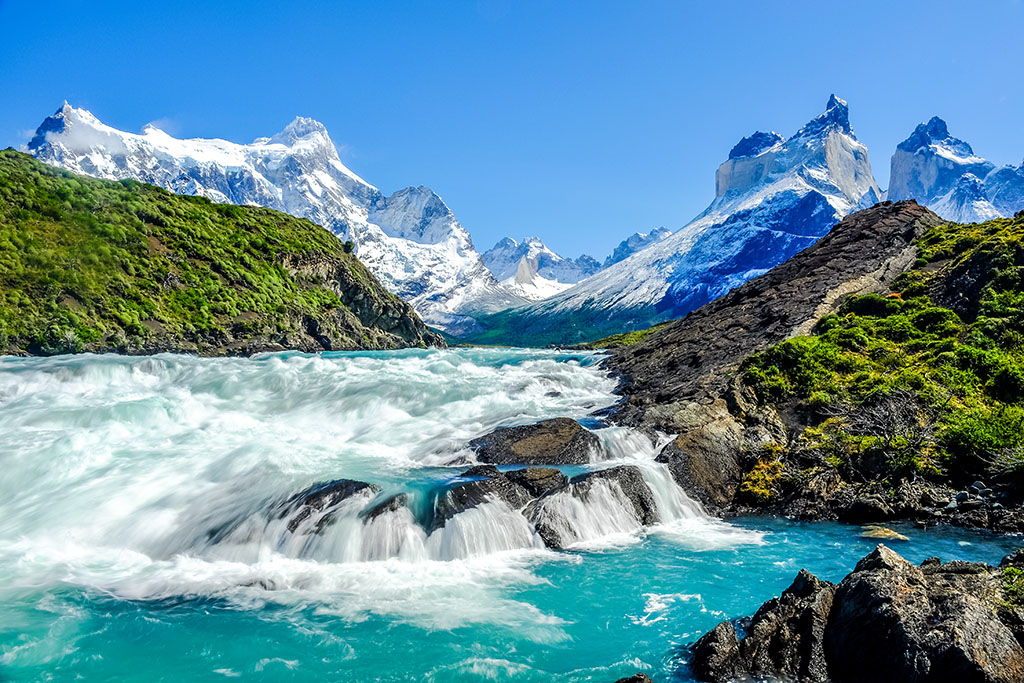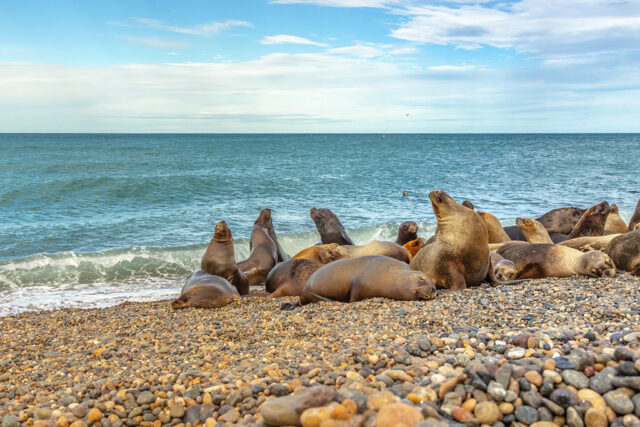
No zoophile can resist the thrall of the unique wildlife of Patagonia. With over 500 animal species, the animal lover in you will be screaming in delight at the otherworldly species that only an environment as wild, harsh and untamed as Patagonia will create. Here you can find a cornucopia of flightless birds, mountain lions and cats, small fluffy mammals and those with natural armored plates. Not to mention the abundance of sea life, many of which migrate to Patagonia seasonally to lay their eggs, birth their pups or simply to wave their fins hello as they pass by.
Land Animals Of Patagonia
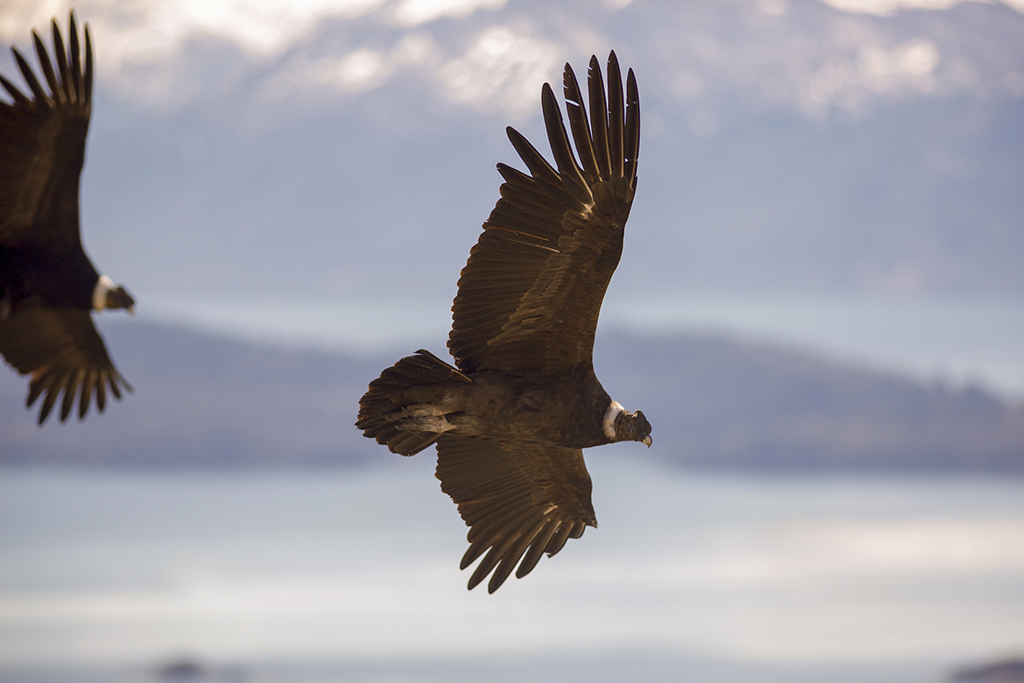
Andean Condor
The Andean Condor is a massive vulture that can live to a ripe old age of 70 years old. It’s no surprise that the‘ King of Birds’ has been revered by the Chilean and Argentinian natives for centuries due to its impressive presence in the skies above. With a wingspan of up to 10 ft and a weight of 30 lbs, it holds the record for the world’s largest flying bird. Due to their large size, they are only capable of flying in regions of canyons or cliffs where strong updrafts can hold up their heavy bodies. Keep your eyes to the skies in Torres del Paine and Laguna Amarga for your best chance of spotting them. Between the mountainous Andes and the guanaco populations the birds can scavenge among, the Patagonian steppes are the ideal habitat for these endangered birds.
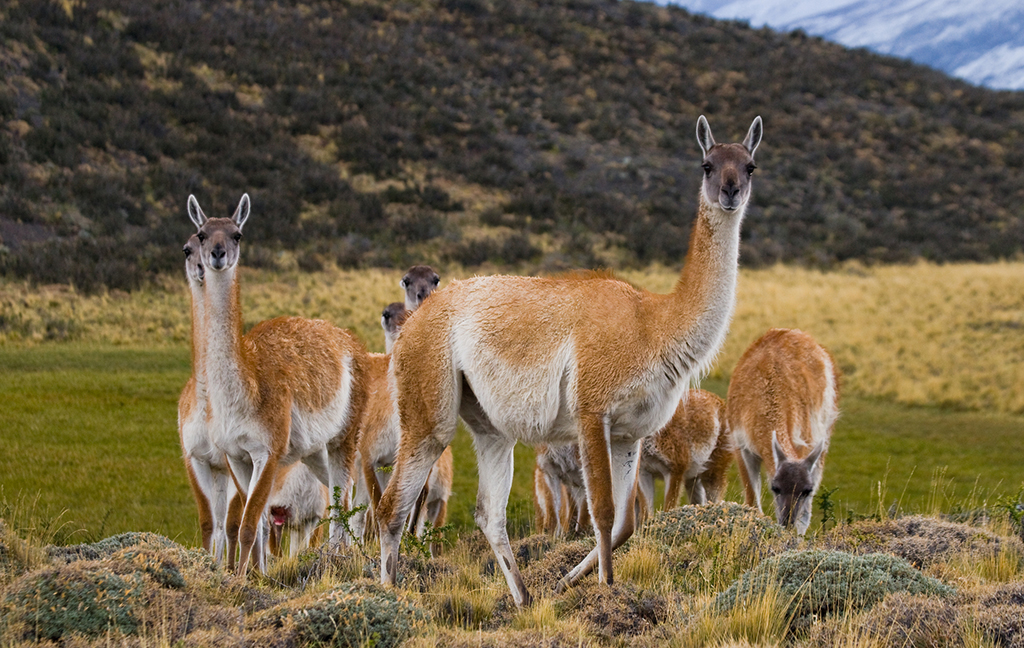
Guanacos
Every day in Patagonia brings sightings of furry llama-like animals called guanacos, the wild relatives of alpacas. Don’t be misled by their gentle appearance, these animals are hardcore, survival experts harshing subzero temperatures of Patagonia. Capable of running up to 35 mph, the guanaco has evolved to escape the mountain lions of the high altitude grasslands. It is South America’s largest land mammal, living in a shrubland that offers little protection against the snow and high wind speeds. You can spot these graceful, caramel colored animals in large herds at an altitude up to a staggering 13,000 ft. However, it is easiest to head to Torres del Paine and Tierra del Fuego National Parks to spot them. As common as they are throughout the steppes, this keystone species’ role in the ecosystem is integral. Without them Patagonia’s famous populations of puma and condor would be no more.

Pumas
The elusive shadow cats of Patagonia rank high on every hopeful visitor’s list of animals to see when visiting the end of the world. Luckily for you, these secretive masters of camouflage have a flourishing population within the parks due to their protected status and the amount of prey accessible to them (i.e. guanacos, rheas and wild hares). If you’d like to ensure a sighting, it’s as easy as joining a puma sighting expedition as Patagonia is the best place in the world to spot them. Specifically, Torres Del Paine National Park and the Aysen Region of Chile have a high densities of these agile felines. Make sure to bring your binoculars to get the most out of this incredible trip highlight. They are not considered dangerous to humans unless they are disrespected, meaning it is in everyone’s best interest if you maintain space and respect the quiet environment of these apex predators. You do not want to play hide and seek with this carnivorous feline.
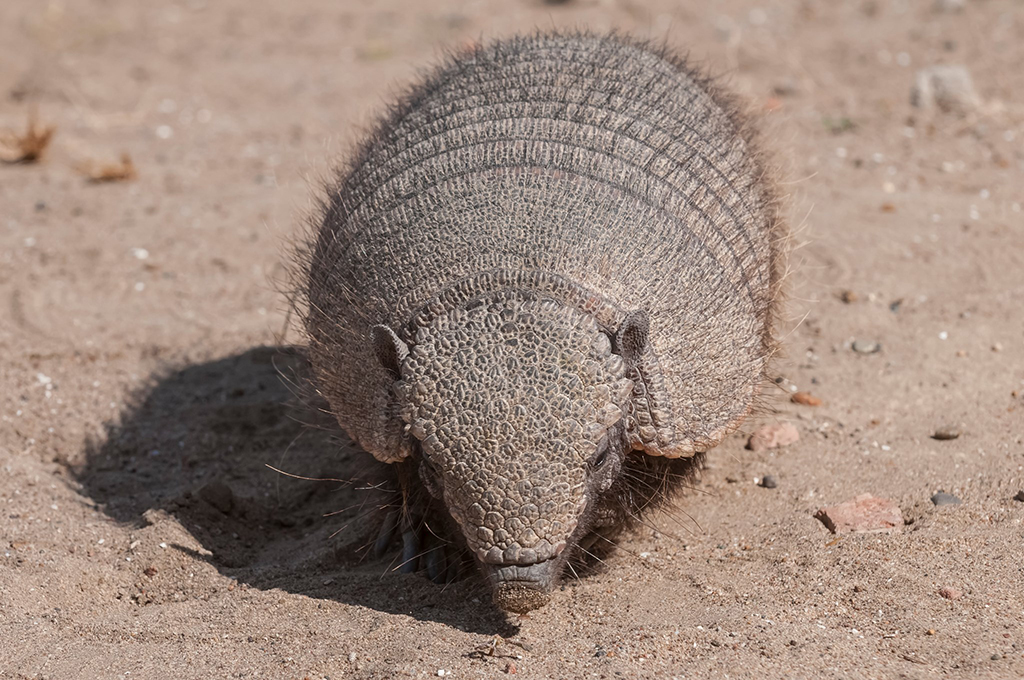
Armadillos
Armadillo, meaning ‘little armored one’ in Spanish due to their distinctive external body armor; they are the only mammal to have this natural protection. They have sharp claws for digging spacious burrows and finding their protein rich food source -insects. They locate bugs, namely maggots, ants, beetles, cockroaches and scorpions with their fantastic smelling capabilities before slurping them up with their sticky, anteater-like tongues. Due to their being nocturnal and living underground, their sight and hearing capabilities are diminished. Though they spend most of their time sleeping and are distantly related to sloths, they are actually quite quick creatures. When they are threatened these shy creatures use digging to escape predators. You have the best chance of seeing these nearly threatened animals during the spring and the fall in the Chilean regions of Magallanes and Aysen. They can also be spotted in Torres del Paine National Park.
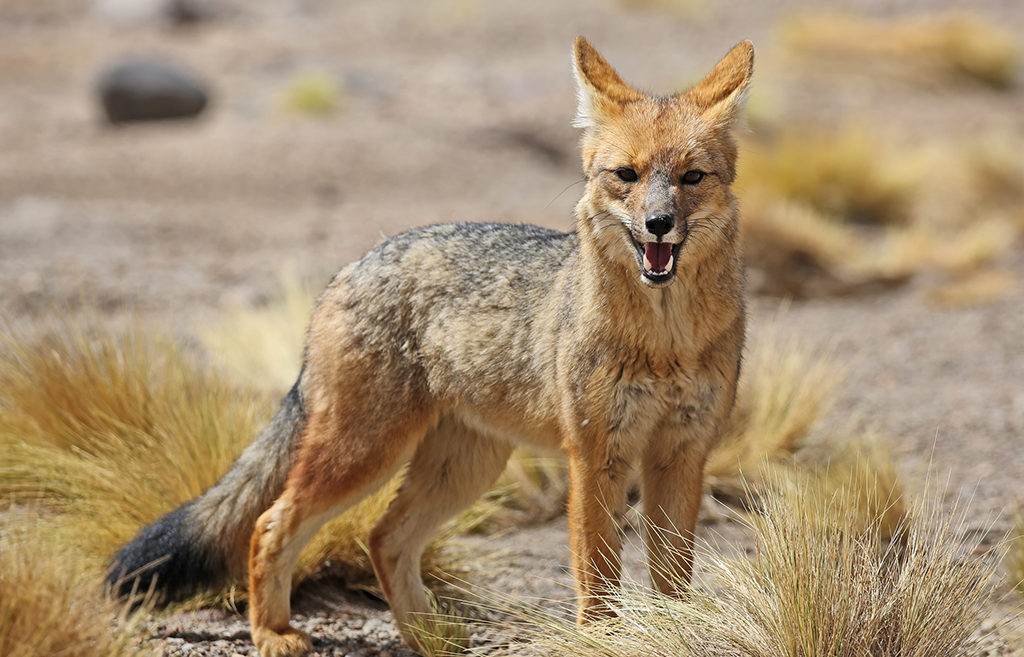
Culpeo & Gray Foxes
Slender and sleek, the foxes of Patagonia can be found hunting in the grasslands preying on small rabbits, rodents such as voles, mice and shrews, even birds are fair game. The Culpeo, twice the size of the Gray fox, occasionally hunts bigger larger animals such as sheep or a young guanaco. The two species can be found all over Patagonia from the deserts and high plateaus to the grasslands. When mating season arrives, a male fights rivals for a vixen before they settle into a den (and a monogamous life) together. In the spring, 2-6 pups emerge to learn from their mothers before heading out on their own. If you’re lucky, you might spot one of these wild animals on the W Trek or while trekking in Tierra del Fuego.
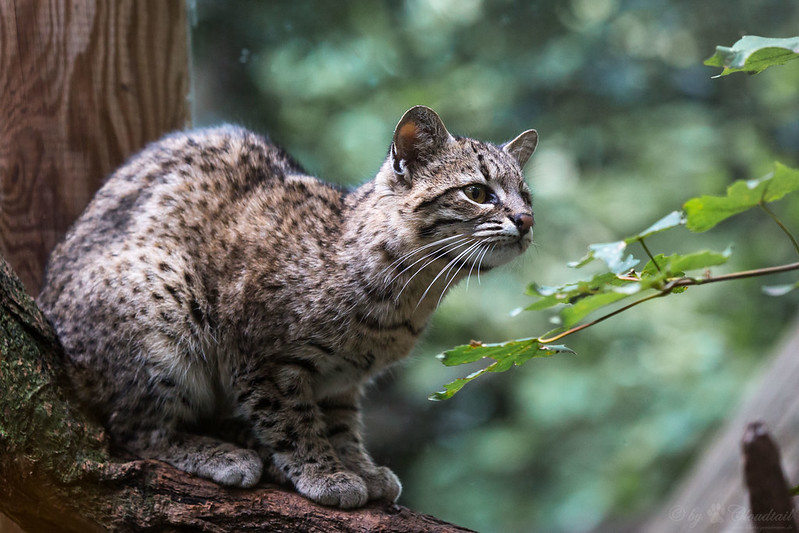
Geoffrey’s Cats
Also known as ‘fishing cats’ or cats of the mountains, Geoffrey’s Cats are the smallest of South America’s wild cats. About the size of a housecat, it presents no threat to humans but is an opportunistic predator, even hunting frogs and fish (see above nickname). They can live in a vast array of South American habits including the trees, grassy pampas and shrublands of Patagonia. Their beautifully spotted coat is a great camouflage but nonetheless they do fall prey to pumas and those participating in the fur trade. Like many other animals living in the extremes of Patagonia, it’s range extends vertically to an impressive 12,000ft of altitude.
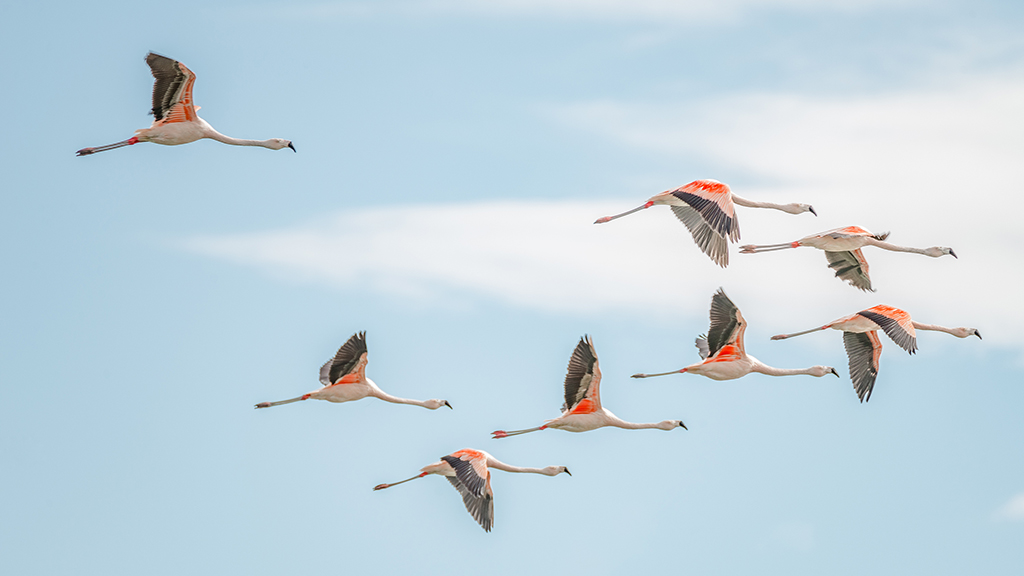
Chilean and Andean Flamingos
From December to February, the lakes, fjords, estuaries and lagoons of Patagonia support threatened flamingos during their breeding season. After selecting mates, couples lay a singular egg atop a mud mound and share the responsibility of incubation. Large colonies collectively raise the chicks until they are able to fend for themselves. Flamingos are not born with their flaming feathers but get their color from the algae and crustaceans of the brine lakes they live in. Their bright pink plumage is not the only unique thing about them, their specialized bills act as a filtration system with their tongue acting as a pump. They are also special in that the indigenous people of the Andes thought flamingos to be a mystical bird of good souls reincarnated. Though habit loss has brought down the populations of this bright pink bird, you can find them in the Aysén and Magallanes Regions of southern Chile.
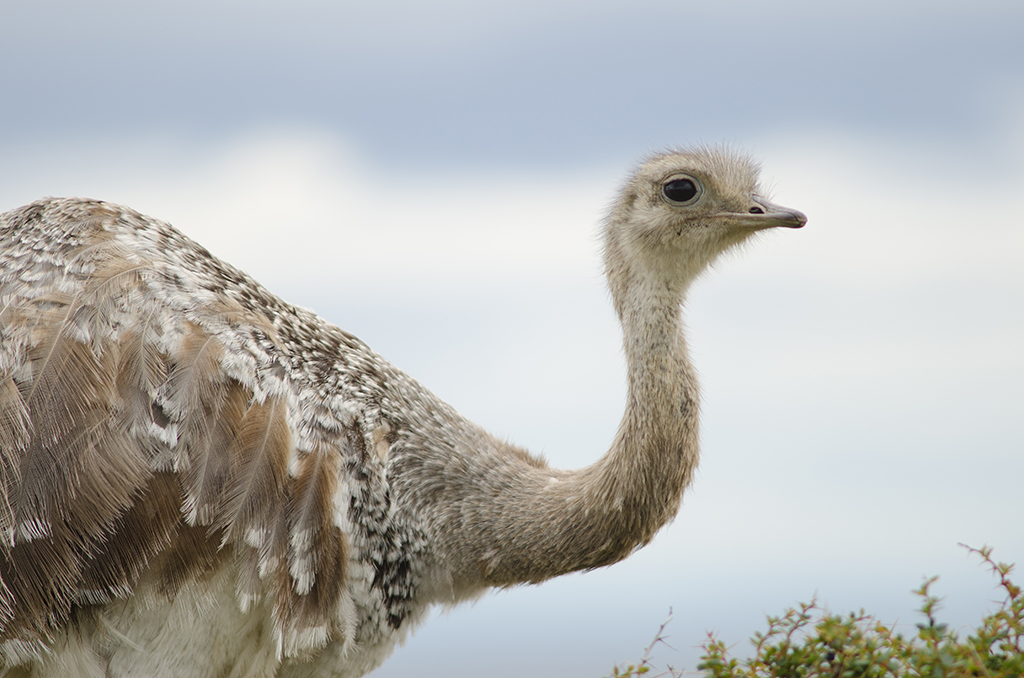
Lesser Rhea
A smaller cousin to the ostrich and emu, the lesser rhea is a flightless bird that lives in the high elevation grasslands of Patagonia. Standing at about 4 ft, the rhea is the biggest bird in South America though it is considerably smaller than its famous African cousins. However, they do have similar habits to ostriches. Just as the ostriches form mixed herds with zebras, rheas can be found with guanacos in South America. During the mating season, the males can be seen courting the females with an impressive wing display and, after the eggs are laid, he will protect and raise the baby rheas. A new flock was recently (2020) reintroduced into Patagonia National Park in southern Chile in an attempt to bring the species back from the edge of extinction. In the last five years, the park’s population of rheas has tripled, undoubtedly making it the best place to see these unique birds.
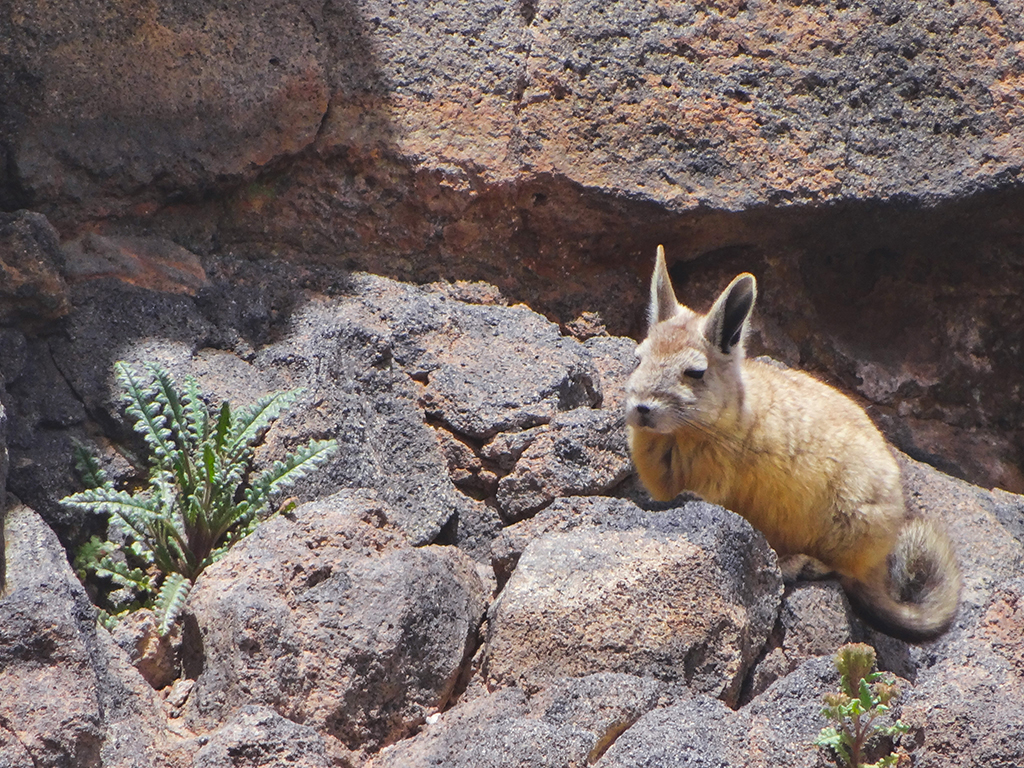
Viscacha
A member of the chinchilla family, viscachas live in large colonies at altitudes of up to 13,000 ft above sea level. They look something like a fluffy rabbit with soft fur and can be seen sunbathing during the day. Viscachas survive off of a diet of mountain moss, lichen and grasses and live in large family groups of up to 75 individuals in rocky dens. They have strong hindlegs for leaping through their rocky surroundings and can be heard making high pitched whistles and trills when in danger. If you are lucky enough to spot one of these endangered, well camouflaged creatures you will not be able to help but give squeak of adoration.
Marine Animals Of Patagonia
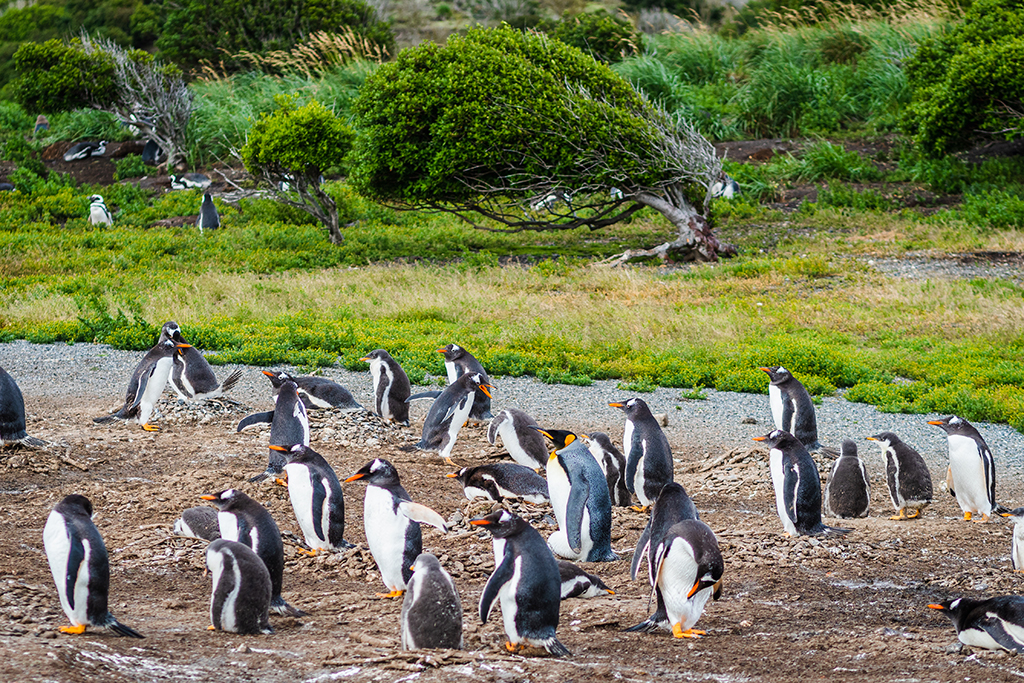
Penguins
Patagonia is home to more penguins than people. These curious, tuxedoed birds are divided into five different species of penguin here, namely the Magellanic, Humboldt, Gentoo, Southern Rockhopper and King. Magellanic penguins are migratory penguins that breed in burrows of large nesting colonies and are the most commonly seen in Patagonia. These small penguins (approximately 2ft tall) are related to the Humboldt penguins though they are more commonly found sharing breeding grounds with Gentoo penguins. King penguins, as you might guess, are the largest penguins found in Patagonia coming in at around 3 ft. They are easily recognizable by their bright orange cheeks and slim figures. Lastly, the Rockhopper penguin, the most elusive of the Patagonian penguins, live in cliffside colonies. It has a bold personality, bright red eyes, and enjoys hopping about. December and January is the best time to see the penguin colonies as this is when the fluffy chicks are making their first appearance in the world.
For the best locations in Patagonia to see the penguins check our blog post.
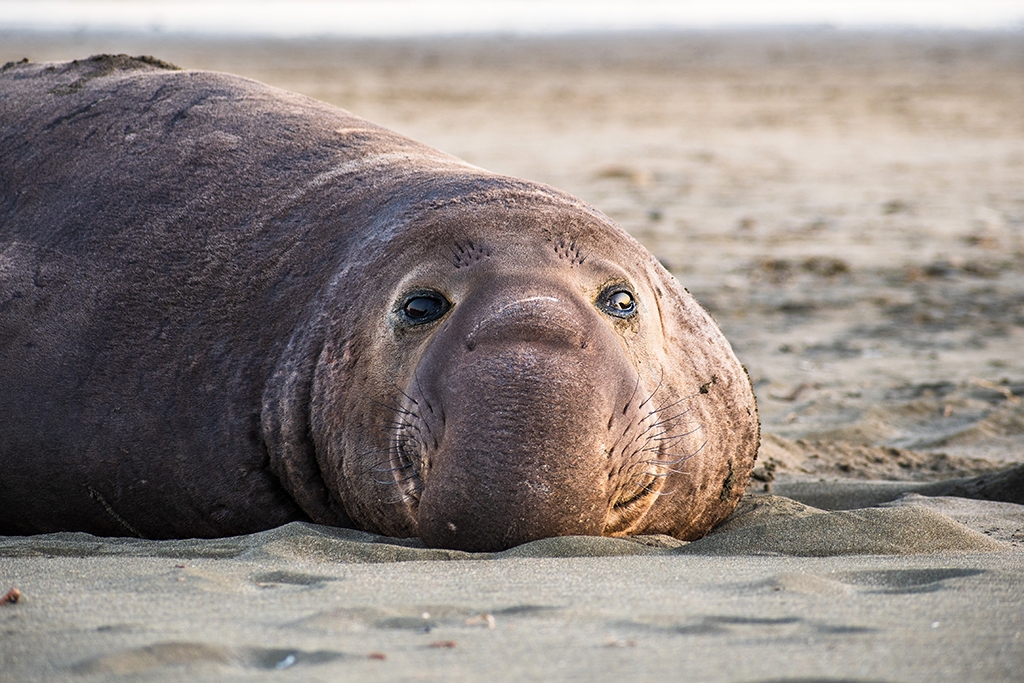
Southern Elephant Seal
Southern Elephant Seals are the largest seals there are with males weighing up to 4 tons, which is approximately 8 times larger than a sea lion! The males use their large trunks to intimidate competitors with loud roars which can sometimes escalate into bloody confrontations. However, it is worth the effort, after arriving to the beaches in August these large males will gather harems of up to 130 females. The females give birth to their pups upon arriving before mating with the large bulls. The best place to see this unique species in Patagonia is the UNESCO World Heritage site in Valdes Peninsula, Chile. However there’s another smaller colony in the Beagle Channel of Tierra del Fuego National Park, Argentina where you can kayak alongside them as well.
In addition to the Beagle Channel, check out things to do in Ushuaia.

Whales
There are several species of whales that frequent the waters around Patagonia, Humpbacks, Blue, Southern Right, and (we know, they’re actually dolphins) Orcas. Humpbacks are famous for their stunning breeching displays and complex songs. They also are known to corral fish with net bubbles and can be spotted seasonally in the Chilean Fjords. The Blue whale, the largest animal on the planet, is surprisingly more difficult to spot. Though, it has recently been discovered that large numbers do spend their southern summer near the Chilean island of Chiloe. Unlike their silent Blue counterpart, the Southern Right whales are curious about boats and enjoy staying near the water’s surface. Their sociability makes them easy to spot ‘sailing’ in the Valdes Peninsula along with our last “whale”, the orca. Orcas are very active near the surface where they engage in play and also, as they are famously known for, hunting sea lion pups or other prey. They are also sometimes located in the Chilean Fjords.
As one of the most rewarding and spectacular places to visit in the world, we sincerely hope you get the chance to explore Patagonia and see it’s beautiful residents. From the joy of seeing its tiny waddling inhabitants to the awe of seeing massive condors above, there’s no doubt that one trip to this region won’t be enough! To enjoy it to the fullest make sure to prepare well in advance with booking accommodations, treks, and by contacting our professional team of adventure consultants with any questions you may have. It is a truly spectacular region for traveling and we wish you happy travels! ¡Buen viaje!
